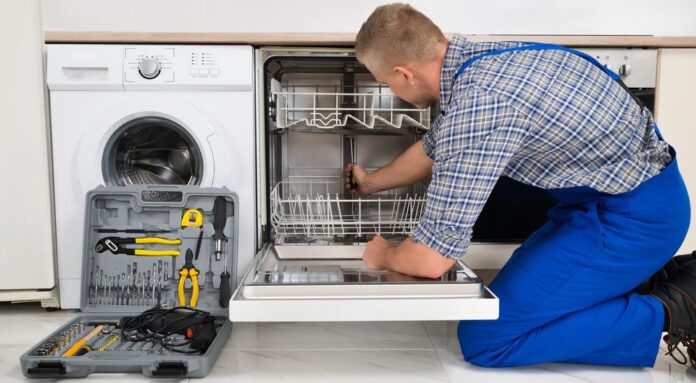Home appliances are designed to improve the quality of your life. They help you save time and effort and get things done easily. However, appliances can get damaged at any time. You may need to fork out hundreds of dollars in repair costs when this happens. Knowing what to do and how to approach in-house repairs can save money. Find below the 10 essential tips advised by Quality Appliance Repair Calgary LTD to master home appliance repair.
1. Start by checking the obvious
Not all stopped appliances are damaged. Sometimes, you need to focus on the obvious and basic things. One of such basic things is checking if your appliance is properly plugged into the electrical socket. Failure to plug your appliance can affect its functionality.
Asides from checking if it is properly plugged in, check if the power button is on and if the power setting is correctly configured. You can also check if any lids are closed correctly, if the appliance is on an uneven surface, etc. These seemingly small and obvious issues can affect your appliance’s performance. Checking them before calling an appliance repair tech can save you some money.
2. Remember the 50% Rule
All appliances have an estimated lifespan. Manufacturers often add a warranty period that covers the first few months or years of the appliance’s lifespan but advises to replace after a certain number of years.
Always remember that appliances that are more than 50% of their lifespan are likely to need frequent repairs. If the repair cost exceeds 50% of a replacement, you’re better off replacing the old appliance.
Replacing appliances that are constantly breaking down can save you money and stress. It can also significantly improve your life’s quality.
3. Pay attention to the Moving Parts
Appliances with moving parts usually have problems with those parts sooner rather than later. Ensure that you pay attention to the moving parts in your appliance.
It is always advisable to catch problems at the earliest stages to prevent further damage. Catching problems with the moving parts like fans or noisy parts can also be an indication of a bigger problem waiting to happen.
4. Familiarize yourself with the refrigerant cycle
Many cooling appliances have refrigerants in them. Knowing what a refrigerant cycle is can save you from raising false alarms. For example, your air conditioner, heat pump, and refrigerator all have refrigerants in them.
Knowing how the cycle works can help you understand what the problem may be and how to address them. You can also determine whether your appliance is slowing down, recycling, or damaged.
5. Multimeters are essential
A multimeter is an essential tool that should always be in your arsenal. Multimeters can help you determine faults in your electrical appliances. You can easily tell whether the appliance is receiving power and where the problem seems to have emanated from.
You can check your local convenience store for multimeter options. You can also read reviews online to guide your selection and purchase.
6. Observe the Ignition Process
Gas-powered appliances often rely on an ignition process to kickstart operation. Those without the traditional ignition process have electric starters or pilot lights that come on at the start of their operation.
It is best to familiarize yourself with the ignition process. This gives you all the relevant information you need about the dos and don’ts during the startup process.
7. Locate the Hoses
Appliances that require water intake and output will usually have hoses somewhere on them. Whether it’s a dishwasher, a washing machine, or other appliances, ensure to locate the hoses.
Study the hoses to know which is the intake and exit hose. Appropriately place the exit hose to avoid water damage. Failure to do this can significantly affect your appliance and home.
8. Replace seals and gaskets
Seals and gaskets are important parts of many appliances. They help to seal-in fluids or air into a vacuum. You can easily find seals and gaskets on your refrigerators, freezers, blenders, etc. Ensure that broken seals or gaskets are properly replaced before operating your appliance.
Call an appliance repair technician if you can’t DIY your way through it.
9. Research Appliance Error Codes
Most appliances have become purely electrical with error codes to help you trace the problems. Look up the meaning of each code when faced with a problem. You can either consult with the manufacturer’s manual or look online for solutions.
The chances are high that you’ll find answers from people who have experienced a similar error code.
10. Buy a full Toolkit
If you’re serious about fixing your appliance problems, then a screwdriver isn’t enough. Invest in a full toolkit that allows you to diagnose and fix the problems,
You can also follow appliance repair professionals for DIY tips and tricks.











